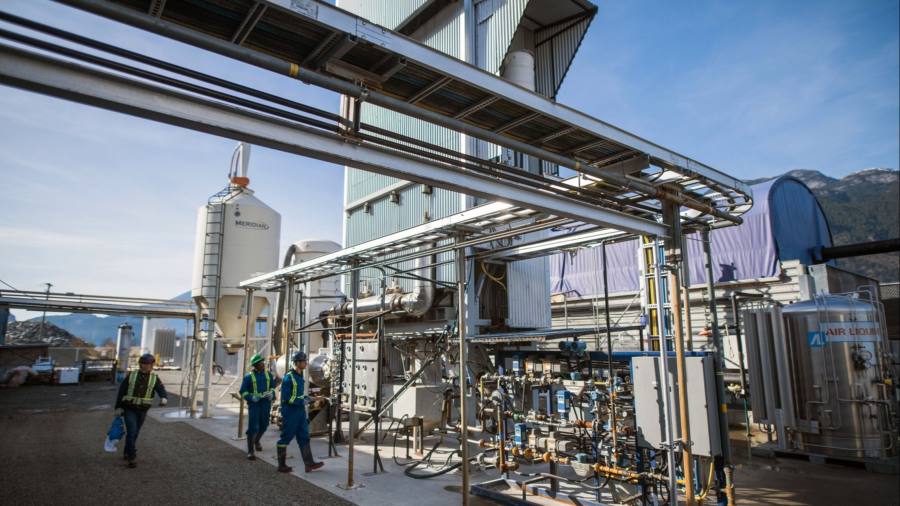Receive free Carbon capture and storage updates
We’ll send you a myFT Daily Digest email rounding up the latest Carbon capture and storage news every morning.
The Biden administration is granting $1.2bn to projects aiming to strip carbon dioxide out of the atmosphere in a bet on a nascent technology that it hopes will play a big role in achieving its net zero goals.
The US Department of Energy said on Friday that it had chosen two “direct air capture” hub developments in Texas and Louisiana as recipients for the funding, one of which is being built by oil company Occidental Petroleum. The projects will be the biggest of their kind.
The White House hopes the grants will help to commercialise the air capture process, driving down costs and spurring a buildout across the country as President Joe Biden looks to decarbonise the world’s biggest economy by mid-century.
“These hubs are going to help us prove out the potential of this game-changing technology so that others can follow in their footsteps,” said Jennifer Granholm, US energy secretary.
The announcement comes as the president tours the US to tout his “Bidenomics” economic programme, including huge federal spending and tax breaks for cleantech projects.
The investment is a win for Occidental, backed by Warren Buffett’s Berkshire Hathaway, which is betting that carbon management will play a big role in global decarbonisation efforts. The company was the S&P 500’s best performer last year and earned $12.5bn in profits.
Vicki Hollub, Occidental chief executive, said the selection of Occidental’s project in Texas was an endorsement of the company’s “readiness, technical maturity and . . . ability . . . to move this technology forward so it can reach its full potential”.
The investments, she said, would “position the United States as the location to demonstrate the commercial viability of direct-air capture and climate-relevant scale”.
Direct air capture sucks already emitted CO₂ out of the air to be buried underground or reused in building materials, agricultural products or fuels, rather than contribute to global warming by lingering in the atmosphere.
The International Energy Agency has said the technology will play “an important and growing role” in setting the world on track to achieving net zero goals as economies continue to burn fossil fuels. But it is not proven at scale and some environmentalists worry it will slow the transition to cleaner forms of energy.
Fewer than 30 DAC plants have been commissioned globally, according to the IEA, with only six under construction. The largest is due online in Iceland next year and is designed to remove 36,000 tonnes of CO₂ from the atmosphere annually. Global CO₂ emissions rose last year to about 37bn tonnes.
The funding announced on Friday is the first tranche of a $3.5bn pot set aside for four DAC hubs under the Bipartisan Infrastructure Law passed in 2021. The package represents the largest investment in engineered carbon removal ever.
Both developments are aiming to build plants capable of pulling an initial 1mn tonnes a year of CO₂ from the atmosphere. The energy department did not provide a breakdown of how the funding would be divided between the two.
The south Texas DAC hub is being built by Occidental and its subsidiary 1PointFive in conjunction with the King Ranch land management group in Kleberg County. The company has said the hub could grow to as many as 30 plants of that size.
Occidental’s first big DAC project began construction in late 2022 in the Permian Basin of west Texas and is expected to come online in 2025, though it has already been delayed and costs have grown to about $1.1bn. It has said it intends to build 100 facilities by 2035, spurred by the Inflation Reduction Act climate law passed a year ago.
The second hub, dubbed Project Cypress in south-west Louisiana, is being driven by applied science group Battelle in co-operation with technology developers Climeworks and Heirloom.
Read the full article here



